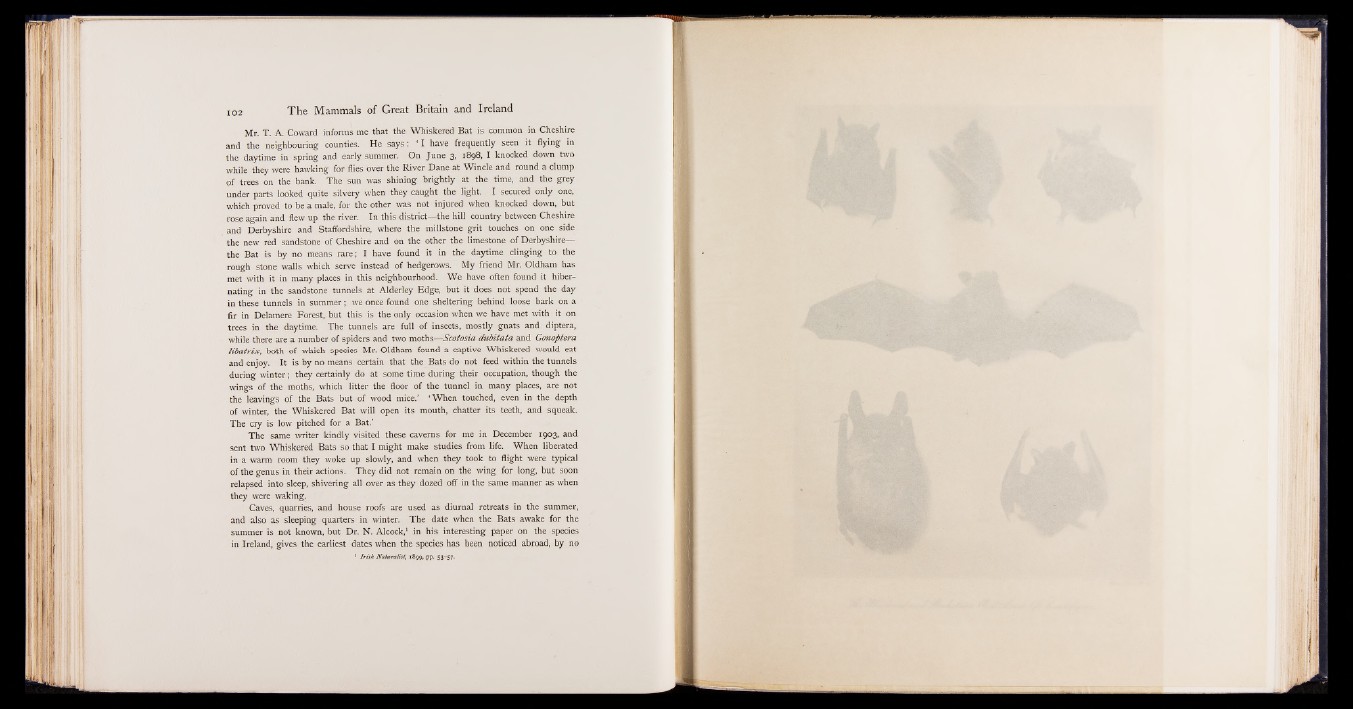
Mr. T. A. Coward informs me that the Whiskered Bat is common in Cheshire
and the neighbouring counties. He says : ‘ I have frequently seen it flying in
the daytime in spring and early summer. On June 3, 1898, I knocked down two
while they were hawking for flies over the River Dane at Wincle and round a clump
of trees on the bank. The sun was shining brightly at the time, and the grey
under parts looked quite silvery when they caught the light. I secured only one,
which proved to be a male, for the other was not injured when knocked down, but
rose again and flew up the river. In this district— the hill country between Cheshire
and Derbyshire and Staffordshire, where the millstone grit touches on one side
the new red sandstone of Cheshire and on the other the limestone of Derbyshire—
the Bat is by no means rare; I have found it in the daytime clinging to the
rough stone walls which serve instead of hedgerows. My friend Mr. Oldham has
met with it in many places in this neighbourhood. We have often found it hibernating
in the sandstone tunnels at Alderley Edge, but it does not spend the day
in these tunnels in summer; we once found one sheltering behind loose bark on a
fir in Delamere Forest, but this is the only occasion when we have met with it on
trees in the daytime. The tunnels are full of insects, mostly gnats and diptera,
while there are a number of spiders and two moths— Scotosia dubitata and Gonoptera
libatrix, both of which species Mr. Oldham found a captive Whiskered would eat
and enjoy. It is by no means certain that the Bats do not feed within the tunnels
during winter; they certainly do at some time during their occupation, though the
wings of the moths, which litter the floor of the tunnel in many places, are not
the leavings of the Bats but of wood mice.’ ‘When touched, even in the depth
of winter, the Whiskered Bat will open its mouth, chatter its teeth, and squeak.
The cry is low pitched for a Bat.’
The same writer kindly visited these caverns for me in December 1903, and
sent two Whiskered Bats so that I might make studies from life. When liberated
in a warm room they woke up slowly, and when they took to flight were typical
of the genus in their actions. They did not remain on the wing for long, but soon
relapsed into sleep, shivering all over as they dozed off in the same manner as when
they were waking.
Caves, quarries, and house roofs are used as diurnal retreats in the summer,
and also as sleeping quarters in winter. The date when the Bats awake for the
summer is not known, but Dr. N. Alcock,1 in his interesting paper on the species
in Ireland, gives the earliest dates when the species has been noticed abroad, by no
1 Irish Naturalist, 1899, pp. 53-57.